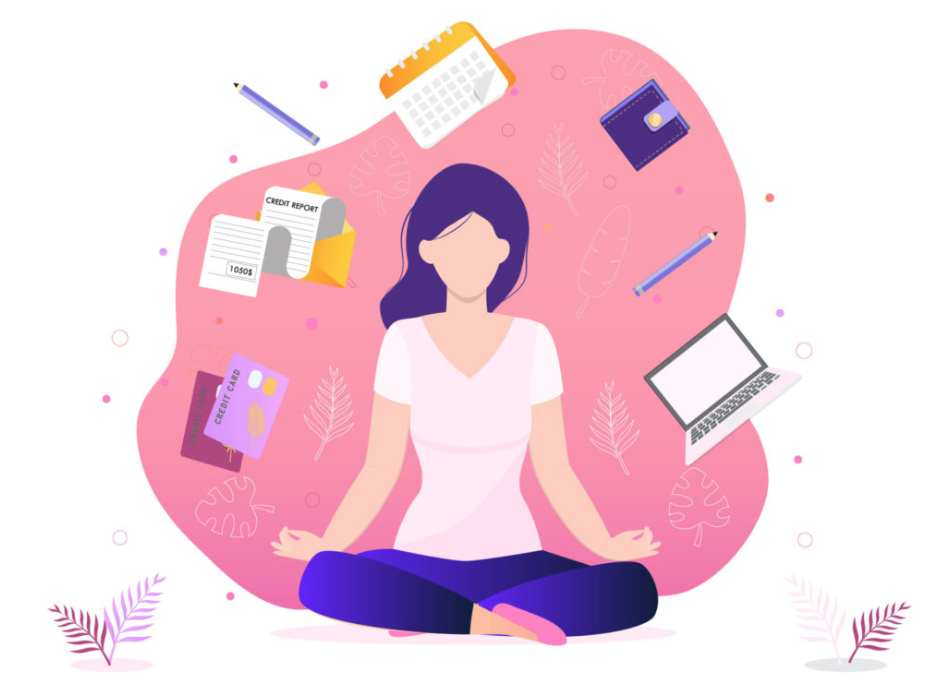By Penny Theodorakopoulou,
A lot of you might think that this article is too outdated since we are way past COVID-19. However, while I was looking for a new job, I realized that more and more companies are adding the WFH (Work From Home) model to their hiring process. Let’s be honest: during and shortly after COVID-19, we all became so accustomed to lockdowns and staying indoors that many companies (mainly corporate ones) switched to working from home — the so-called “remote job”.
I, too, recently became part of the WFH “group”. Over the past year, I’ve seen a significant change in my working style—a total 180-degree turn away from the bustle of my previous jobs (whether in retail or in a factory) to the occasionally lonely realm of a home office. This adjustment did more than just reorganize my daily routine; it changed who I am in unexpected and frequently positive ways. However, the journey was neither uniform nor easy, as is the case with every major life transition. Here’s a closer look at what working from home actually means—its advantages and its drawbacks—which we’ll explore below.
Chapter 1: From close-knit teams to virtual networks
As mentioned above, I worked in environments where my coworkers were physically in the same room for most of my career. Sharing a space with individuals who were aware of the subtleties of our work and personal lives was innately reassuring. In addition to fostering friendship, the clamor of a bustling store or the coordinated productivity of a factory provided a real and necessary support system.
When I changed jobs and started working from home, it felt like entering a vast, unexplored digital world. At first, the initial weeks were intimidating; I missed the warm greetings when walking into the workplace and the endless conversations I used to have with colleagues during shifts. I missed those small human exchanges that once seemed unimportant—and I still do, don’t get me wrong—but are actually what hold a team together.
As time passed, I realized that the Internet can be a surprisingly strong corrector. My new “water cooler” became virtual meetings and chat rooms, where I met coworkers from across the country. For instance, during the training period, each of us introduced ourselves to the rest of the team and shared how we ended up in a specific job and/or project. It was a truly memorable experience. I became more aware of the variety of experiences that enriched our work lives—like hearing a colleague from a rural Midwestern town here in Corinth describe how her work ethic was shaped by local customs, or how another, from the busy West Coast, handled work-life balance. This newly discovered web of connections was a welcome shift from the homogeneity of a single work setting.

Chapter 2: The freedom of self-expression
Setting your own dress code and, in a metaphorical sense, your own mood for the day is one of the most liberating parts of working from home. I’ve discovered that my attire can subtly but significantly affect how I think. An unwritten code—a consistency often dictated by the nature of the job—exists in traditional office or factory settings. But at home, I may choose the ease of a comfortable T-shirt and well-worn jeans, or I might dress up the top half for a video call while enjoying the freedom of loungewear underneath. And yes—you guessed it—even PJs!
For instance, I remember one important morning when I decided to wear a cheerful, patterned shirt that gave me hope. Several coworkers commented on how the shift in atmosphere seemed to boost the creativity of our brainstorming session, and I could feel the positive vibes coming through the screen when I logged into that team meeting. In addition to giving me more self-confidence, this small act of self-expression quietly changed the tone of the discourse, making it livelier and more dynamic.

Chapter 3: Overcoming the isolation trap
However, working from home is not always a dream come true. A job that involves frequent virtual encounters is very different from one that keeps you cooped up in front of a computer screen for hours on end. The balance is typically better in roles where interaction is a daily requirement, such as customer service. Even in these cases, where there was no human interaction other than through the Internet, I discovered that it was often enough to prevent feelings of loneliness. Believe me, it’s one thing to sit at your PC watching movies or playing games and chatting with online friends, and another thing entirely to be stuck in a chair, listening to customer complaints all day, dealing with their behavior, while trying to stay productive and keep your morale up. It’s quite difficult.
On the other hand, there are instances where your emotional health may suffer due to the absence of face-to-face engagement. I’ve been in that position before—hunched over the company’s computer, days blending together without the bustle of an office to break up the monotony. There were times I felt so alone that I seriously considered quitting, just because I missed the familiar buzz of working with others. I learned that maintaining a sense of closeness requires consistent engagement—whether with coworkers, managers, or clients. Organizing informal meet-ups, creating virtual “water cooler”’ moments, or even joining online interest groups can be ways to fight the loneliness that sometimes accompanies remote work. Every interaction matters.

Chapter 4: Prioritizing self-care in a sedentary world
When you work from home, you may unintentionally become more sedentary. When the commute is reduced to a quick shuffle from the bedroom to desk, it’s easy to lose track of time, stay indoors too long, and neglect your physical health. I can recall times when I worked so late into the night that I forgot to exercise or eat properly because the lines between my job and personal life had become so blurred. Also, here’s a tip I learned from experience: do not spend your breaks in front of a screen. You need to see something other than monitors, numbers, names, etc. Talk to someone, freshen up, have a quick bite—anything but being stuck on your phone during your breaks!
I began incorporating small but essential routines into my day after realizing my health was suffering. I started setting alarms to remind myself to take walks—whether around the block or just stepping outside for fresh air. These breaks not only helped preserve the balance between productivity and self-care, but also mentally resfreshed me. Establishing a dedicated workspace at home was also essential in creating a psychological boundary between work and personal life. These small adjustments greatly improved both my focus and my ability to unwind afterward.

Chapter 5: The critical role of mental health
The value of preserving mental wellness is arguably the most important lesson I’ve learned from this transition. Dealing with the inevitable frustrations of interacting with customers via a screen can sometimes erode job satisfaction. On some days, I felt myself spiraling into pessimism and self-doubt due to the constant flow of complaints or the frequent misunderstandings that come from text-based communication. I came to realize that protecting your mental health isn’t just beneficial—it’s essential to success in any profession.
As a coping mechanism, I deliberately set boundaries and engaged in stress-relieving activities. For example, I set aside time for mindfulness practices like guided meditation or even quiet moments of reflection after particularly tough days. Celebrating small wins—like completing a difficult project or successfully resolving a challenging customer issue—also helped. I would share these moments with friends or supportive online communities. These techniques strengthened my belief that mental resilience is crucial for a long and fulfilling career. I even attended an off-work event in Athens to help clean up Mount Hymettus. It was a great bonding experience with my team and an opportunity to meet people from other projects!

Chapter 6: Building a future out of change
As I reflect on the past year, I firmly believe that working from home has changed who I am—not by erasing my past experiences, but by building upon them in new ways. This transition showed me that change, while disruptive, can lead to both professional and personal growth. I’ve learned to appreciate the independence, flexibility, and opportunities for self-expression that remote work offers—even though I still sometimes miss the in-person connection and the natural energy of a shared space.
These lessons have had a lasting impact on me, and I now envision a future where success depends on adaptability. The ability to move between physical and virtual environments while maintaining strong connections and protecting your physical and mental well-being is a skill that will only become more important. Perhaps the most meaningful takeaway from this journey has been learning how to navigate change with resilience and self-awareness—qualities that are essential in a fast-paced and unpredictable world.




